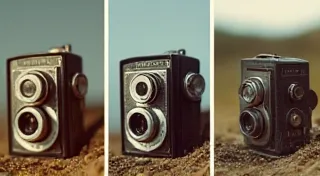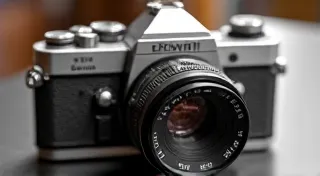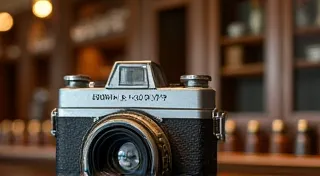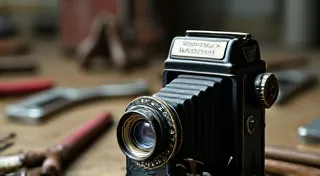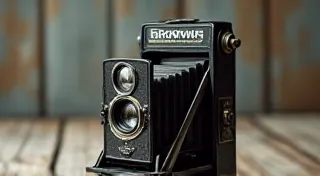The Brownie Star: Kodak's Post-War Offering
The Brownie camera series holds a special place in the history of photography. It democratized picture-taking, making it accessible and affordable for the masses. After the disruption of World War II, Kodak sought to reinvigorate the Brownie line, and the result was the Brownie Star, a model that represents a fascinating chapter in post-war camera design. Understanding the broader impact of the Brownie family requires looking at its history, and exploring the legacy of Brownie itself helps to appreciate the Star's place in the photographic landscape.
A Return to Form
Prior to the war, Brownie cameras had evolved significantly, incorporating features like coupled rangefinders and various lens options. The war effort, however, necessitated simplified production and designs. The Brownie Star, introduced in 1948, marked a return to a more robust and somewhat refined design, though still retaining the essential Brownie simplicity. It wasn't a radical departure, but it was a clear signal that Kodak was ready to move forward and offer a camera suitable for the post-war consumer. The changes reflected a broader shift as Kodak looked beyond the standard Brownie formats.
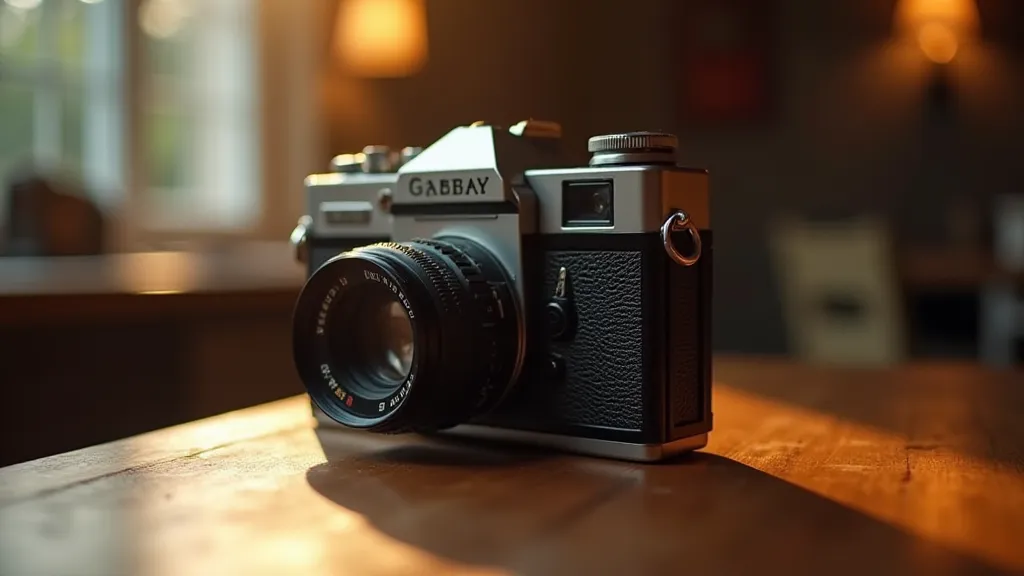
Technical Specifications and Features
The Brownie Star was a box camera with a fixed-focus lens. It used 620 film, a readily available format at the time. Exposure controls were straightforward: a simple shutter speed selection (marked "time" or "instant") and an aperture setting. The "time" setting was for longer exposures, suitable for daylight landscapes, while the "instant" setting was for quicker snapshots. The camera included a basic, but effective, viewfinder. While it lacked the advanced features of more expensive cameras, its ease of use was its greatest appeal. The body was typically made of bakelite, a durable and then-modern plastic. The design prioritized simplicity over advanced features, a hallmark of the Brownie line as a whole. For collectors seeking models with more unique features, exploring rare and unusual Brownie camera models might offer a deeper dive into the series’ diversity.
Design and Aesthetics
The Brownie Star’s design reflected the aesthetic preferences of the late 1940s. It was available in a range of colors, most commonly black, brown, and grey. The chrome accents added a touch of elegance, and the overall look was clean and functional. It's a camera that feels substantial in the hand – a testament to Kodak's commitment to quality, even in its most entry-level models. The rounded edges and slightly curved body made it comfortable to hold, a small detail often overlooked, but appreciated by photographers of the era. This focus on user experience was a key differentiator for Kodak, particularly as other manufacturers began experimenting with more complex photographic systems. The Brownie Star's success relied on its ability to provide a reliable and enjoyable photographic experience for a wide range of users. The impact of the Brownie line extended beyond mere affordability; it cultivated a culture of casual photography that had lasting effects.
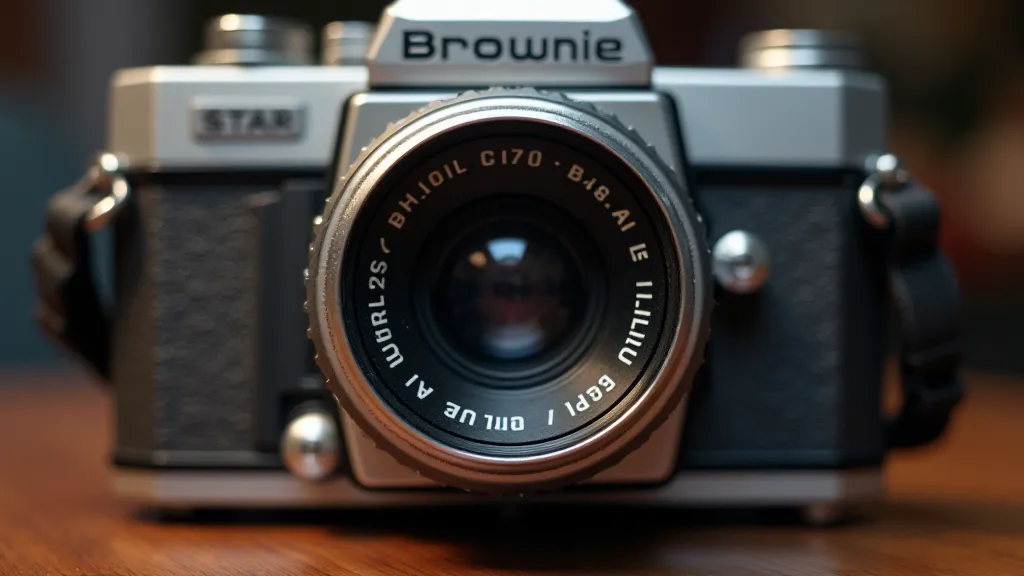
The 620 Film Format and its Significance
The choice of 620 film for the Brownie Star wasn’s arbitrary. At the time, 620 film was extremely common and readily accessible in photographic stores across the country. Its popularity stemmed from being a shorter version of the 120 film, offering a convenient balance between the number of exposures and the size of the film cartridge. The film format’s accessibility contributed significantly to the Brownie Star’s widespread adoption, ensuring that potential users wouldn’t be deterred by the need to source obscure or difficult-to-find film stocks. While 620 film isn't manufactured today, adapters and conversion services exist for users wanting to continue using vintage cameras like the Brownie Star. Understanding the history of film formats adds another layer of appreciation for the ingenuity and design considerations of the era.
The Brownie Star in the Context of Kodak’s Post-War Strategy
The launch of the Brownie Star wasn't just about resurrecting a beloved camera line; it was a strategic move by Kodak to maintain its dominant position in the post-war photographic market. The war years had seen a temporary slowdown in consumer spending and a shift in manufacturing priorities. As the economy rebounded, Kodak was keen to capitalize on the pent-up demand for photographic equipment. The Brownie Star, with its familiar branding, approachable price point, and ease of use, was perfectly positioned to capture a large share of the market. It served as a reliable workhorse, introducing countless individuals to the joy of photography and reinforcing Kodak’s reputation as the leading provider of photographic solutions. While the Brownie Star represents a compact and accessible solution, enthusiasts seeking a larger format experience should explore the Brownie Six camera guide, which offers a look at a more substantial model in the Brownie family.
Collecting the Brownie Star Today: Condition, Value, and Common Issues
For collectors of vintage cameras, the Brownie Star represents an important piece of Kodak's history. While not exceptionally rare, examples in good condition, especially those retaining their original boxes and documentation, can be quite desirable. The original packaging is a key indicator of authenticity and contributes significantly to the camera’s overall value. The presence of the original instruction manual is also a significant plus, providing valuable information about the camera’s operation and care. Assessing the condition of the bakelite body is crucial, as cracks and deterioration are common with age. Light leaks in the bellows (if present) are another potential issue that can impact the camera’s functionality. Corrosion on the chrome trim can also detract from the camera’s aesthetic appeal. The simplicity of the camera means that repairs, if needed, are often relatively straightforward, making it an appealing option for both experienced and novice vintage camera restorers.
Tips for Acquiring a Brownie Star: Auction Strategies and Best Practices
The Brownie Star frequently appears in online auctions and vintage camera sales. When bidding on a Brownie Star, it's essential to carefully examine the seller's description and photographs. Don't hesitate to ask questions about the camera's condition, functionality, and history. A well-preserved Brownie Star will typically command a higher price, but even a camera with minor imperfections can be a rewarding acquisition for a dedicated collector. Be mindful of shipping costs, as vintage cameras can be fragile and require careful packaging. Establishing a budget before bidding and sticking to it is also crucial, as the excitement of an auction can sometimes lead to impulsive decisions. Finding a Brownie Star and keeping it in good working condition relies on understanding the marketplace and applying smart acquisition strategies. Those looking to expand their vintage camera collection should consider utilizing resources and platforms specializing in vintage camera auctions. If you're new to the vintage camera world, learn about finding Brownie cameras and the best practices for acquiring them.
A Legacy of Simplicity and Accessibility
The Brownie Star may not have been a groundbreaking camera, but it played a crucial role in maintaining Kodak's dominance in the photographic market during the post-war years. It exemplified the company’s commitment to producing reliable, user-friendly cameras for the masses. It’s a reminder that sometimes, simplicity is the greatest strength. The Brownie Star wasn't about complex controls or high-end optics; it was about empowering ordinary people to capture moments in time and share their experiences with others. This philosophy continues to resonate with vintage camera enthusiasts today, who appreciate the Brownie Star’s unpretentious charm and its ability to transport them back to a simpler era. The camera's enduring appeal demonstrates the power of accessibility and user-friendliness in the realm of photography.

